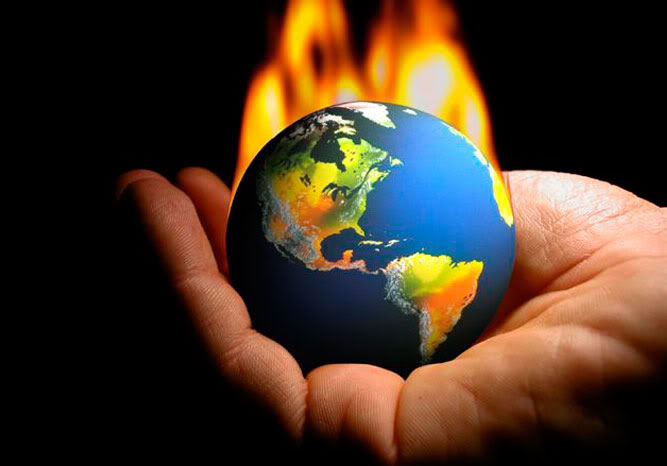Global Climate Change
 If it had been suggested prior to the 1980s that the study of ice—
that is, glaciology—would be the key to initiating international
action on global climate change, most climate scientists would
probably have laughed. However, that is exactly what occurred.
The kick-start came from the Vostok ice core, a project that had
been underway at the Soviet station at the Pole of Inaccessibility
in East Antarctica since the 1970s. By the mid-1980s, the French
were in close partnership with the Soviets; in 1987, they jointly
published their results on the stable water isotopes and greenhouse
gas concentrations (methane and carbon dioxide, CH4 and
CO2) identified in air bubbles in the core.
If it had been suggested prior to the 1980s that the study of ice—
that is, glaciology—would be the key to initiating international
action on global climate change, most climate scientists would
probably have laughed. However, that is exactly what occurred.
The kick-start came from the Vostok ice core, a project that had
been underway at the Soviet station at the Pole of Inaccessibility
in East Antarctica since the 1970s. By the mid-1980s, the French
were in close partnership with the Soviets; in 1987, they jointly
published their results on the stable water isotopes and greenhouse
gas concentrations (methane and carbon dioxide, CH4 and
CO2) identified in air bubbles in the core.
 The paleoclimate record that has been obtained from ice cores
drilled in Antarctica and Greenland represents global climate variability
on timescales of millennia and longer. Faster fluctuations
are affected by the local peculiarities of Antarctica and Greenland,
leading to interesting differences in the ice core records . These
differences are fundamentally caused by two factors. First,
Greenland is located south of the Arctic Ocean, and many other
landmasses are located almost as far north as Greenland. Eastern
Canada and Scandinavia were occupied by large ice sheets during
the glacial periods, which dominated the last few hundred thousand
years, whereas Greenland is the only Northern Hemisphere
ice sheet existing during the relatively short (10000 year) interglacial
periods.
The paleoclimate record that has been obtained from ice cores
drilled in Antarctica and Greenland represents global climate variability
on timescales of millennia and longer. Faster fluctuations
are affected by the local peculiarities of Antarctica and Greenland,
leading to interesting differences in the ice core records . These
differences are fundamentally caused by two factors. First,
Greenland is located south of the Arctic Ocean, and many other
landmasses are located almost as far north as Greenland. Eastern
Canada and Scandinavia were occupied by large ice sheets during
the glacial periods, which dominated the last few hundred thousand
years, whereas Greenland is the only Northern Hemisphere
ice sheet existing during the relatively short (10000 year) interglacial
periods.
The 3 km high Laurentide Ice Sheet and
Scandinavian Ice Sheet produced different atmospheric circulation
patterns than those seen today. In contrast, Antarctica is surrounded
by the Southern Ocean, along with other significant landmasses
that are located too close to the Equator to support large ice
sheets, even during the cold glacial periods; therefore, the main
circulation patterns remain largely unaltered over glacial cycles.
The second reason why Greenland reacts differently than
Antarctica is the role of the North Atlantic Ocean in circulating
warm tropical ocean waters to the north and into the Arctic seas.
At present, these currents provide about 30% of the heat to
Northern Europe, making that region much warmer than
corresponding latitudes in Asia. This system (known as the Atlantic
meridional overturning circulation, AMOC) appears to be rather
sensitive to changes in the density and temperature structure of
the ocean.
The important question challenging many ice modelers today is,
how much sea level rise can we expect to come from the ice sheets
over the next century or two? This question was brought into focus
by the recent dramatic breakup of many large ice shelves around
the fringes of Antarctica , and by the suggestion that past sea
level rise sensitivity and response speed to warming was far faster all the way to its base, even hundreds of meters below the surface,
in a process known as ‘‘hydro-fracturing.”
The second process is via
basal melting and weakening by warm ocean water, which can
typically deliver an order of magnitude more heat to the ice shelf
than the atmosphere does. As the ice shelf thins, it becomes unable
to support its own weight, and simply breaks apart
behaving as a self-organized critical system.